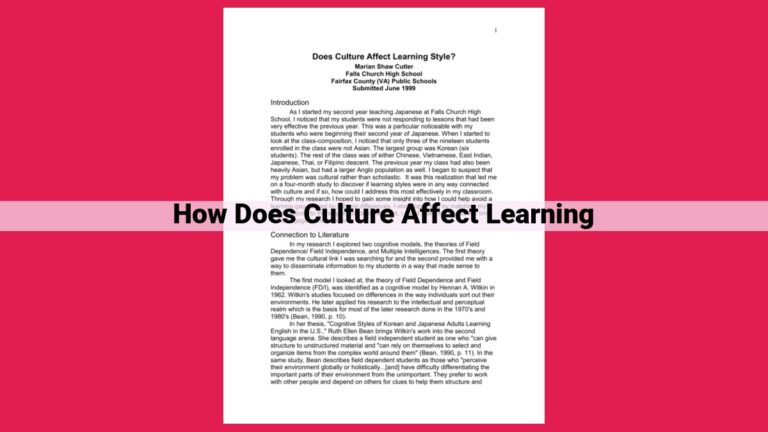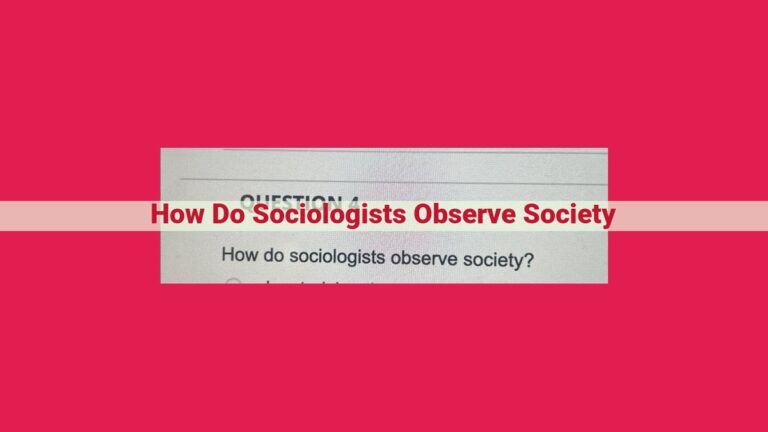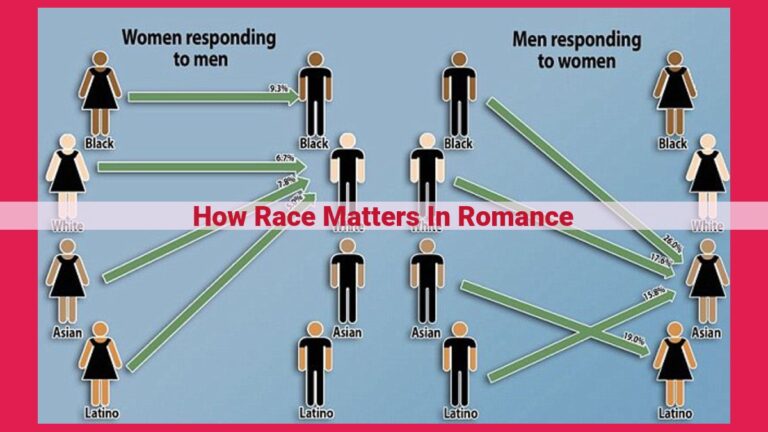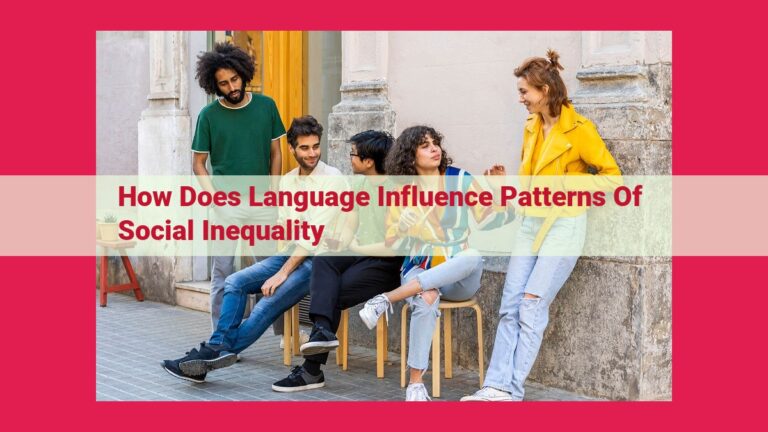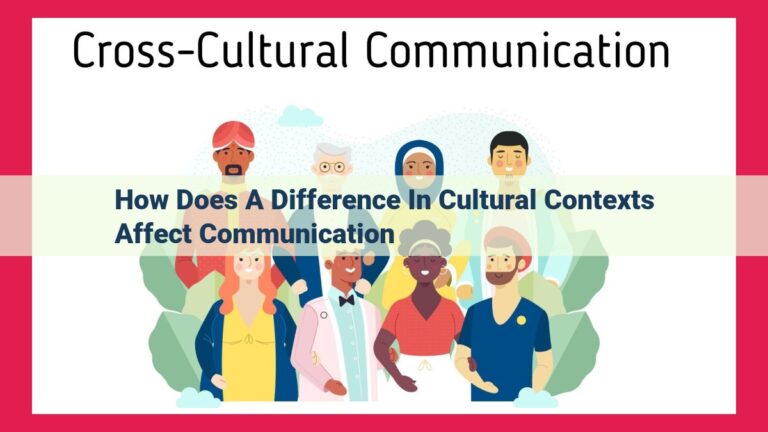Comprehensive Guide To Personality Observation: Methods And Techniques For Understanding Individuality
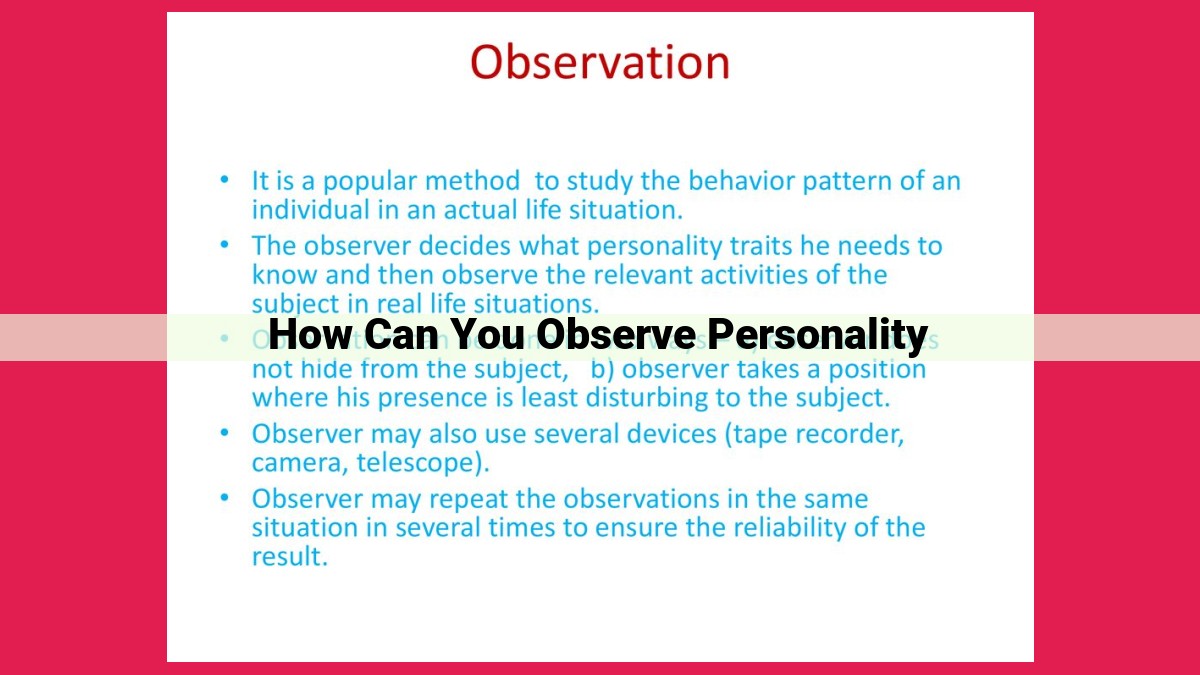
Personality observation involves diverse methods to capture individual behavior, traits, and unconscious processes. Direct observation documents real-time behaviors, while peer observation gains insights through social interactions. Self-observation allows for introspection and self-reporting. Structured interviews gather detailed information, while personality tests measure specific traits. Projective tests reveal unconscious thoughts. Situational assessments observe behavior in real-life scenarios, and life history methods delve into developmental influences. Conversation analysis examines communication patterns. Trait models categorize personality characteristics, providing a structured framework for understanding personality.
Direct Observation: Capturing Real-Time Behavior
Observe your neighbor’s daily routine. Do they wake up early and head straight to the gym? Or do they linger in bed, scrolling through social media? Direct observation allows us to gather information about a person’s behavior in real-time, providing valuable insights into their personality.
Behavioral observation focuses on specific, observable actions. It involves recording the frequency, duration, and intensity of behaviors like smiling, fidgeting, or eye contact. This method is advantageous for studying behaviors that are difficult to self-report, such as nonverbal cues. However, it may not capture the underlying intentions or motivations behind these behaviors.
Naturalistic observation takes place in a person’s natural environment, without any manipulation or intervention by the observer. This approach provides a glimpse into everyday behaviors that may not be exhibited in more formal settings. However, it can be challenging to control for extraneous variables that may influence behavior, such as social context or environmental factors.
Participant observation involves the observer becoming a part of the group or setting under observation. This method allows for a deeper understanding of the social interactions and cultural norms that shape behavior. However, it may raise ethical concerns and bias the observer’s perceptions due to their active involvement.
Peer Observation: Unveiling Personality Through Social Dynamics
Peer Observation in Psychology
Peer observation is a valuable method for understanding personality by observing individuals in their social interactions. It involves seeking feedback and perspectives from people who know the individual well.
Forms of Peer Observation
- Social Validation: Occurs when individuals seek approval or confirmation from others, revealing their need for social support.
- Subjective Observation: Involves unstructured observations made by peers, providing insights into an individual’s behavior and mannerisms.
- Peer Assessment: A more formal process where individuals evaluate each other’s personality traits, skills, and behaviors.
Unique Perspectives from Peers
Feedback from peers can provide unique perspectives on personality because:
- Peers observe individuals in natural settings, reducing the potential for artificial or staged behavior.
- They may have intimate knowledge of the individual’s thoughts, feelings, and motivations.
- Peers can provide candid and honest feedback, as they are often less influenced by social norms or external pressures.
Peer Observation in Practice
Peer observation can be implemented in various settings, such as schools, workplaces, and research studies. It can be incorporated into activities like group discussions, role-playing exercises, or peer mentoring programs.
Conducting peer observation effectively involves:
- Establishing clear guidelines and expectations for feedback.
- Ensuring privacy and confidentiality to encourage open and honest responses.
- Providing training and support to peers to enhance their observation skills.
Benefits of Peer Observation
- Increased self-awareness: Individuals can gain insights into their own strengths and areas for improvement.
- Enhanced interpersonal skills: Peer feedback can help individuals understand how they are perceived by others and improve their communication and interpersonal skills.
- Improved team dynamics: Peer observation fosters collaboration and understanding among team members, leading to better teamwork and conflict resolution.
- Objective evaluations: Feedback from multiple peers can provide a more balanced and comprehensive view of an individual’s personality traits and behaviors.
Self-Observation: Introspection and Self-Reporting
- Explore the role of introspection and self-reflection in personality observation.
- Discuss self-reporting methods such as surveys, questionnaires, and self-monitoring.
Self-Observation: Unveiling Your Inner World
When it comes to understanding our personality, we often rely on the observations and feedback of others. However, self-observation plays a crucial role in gaining a deeper insight into our own thoughts, feelings, and behaviors.
Introspection: A Journey Within
To practice introspection, we embark on a journey inward, examining our own experiences and reactions. We pay attention to our inner dialogue, our emotional responses, and our motivations. By exploring our subjective perspective, we gain a better understanding of the underlying patterns and drivers of our behavior.
Self-Reporting: Quantifying Our Experiences
Another method of self-observation is self-reporting. This involves systematically recording our own experiences and behaviors through surveys, questionnaires, and self-monitoring. These methods can provide quantifiable data on our personality traits, preferences, and habits.
The Benefits of Self-Observation
Self-observation offers several benefits. It allows us to:
- Develop a deeper understanding of our own motivations and behaviors.
- Monitor our progress and track changes in our personality over time.
- Identify areas for growth and personal development.
- Increase our self-awareness and make more informed decisions.
Limitations of Self-Observation
While self-observation is valuable, it also has limitations. Subjectivity can influence our observations, and we may be biased towards seeing ourselves in a certain light. Additionally, social desirability can lead us to report answers that we believe others will find favorable.
Combining Methods for a Comprehensive View
To obtain a comprehensive understanding of our personality, it is important to combine different methods of observation. Self-observation can complement other techniques such as peer observation, structured interviews, and personality tests. By triangulating our findings, we can gain a multi-dimensional and more accurate picture of our true selves.
Structured Interviews: Gathering Detailed Information for Personality Assessment
Structured interviews are meticulously designed to elicit specific information about an individual’s personality traits. These interviews follow a pre-determined set of questions and procedures, ensuring consistency and reliability in data collection. Let’s dive into their purpose, benefits, and common examples.
Purpose and Benefits
Structured interviews are invaluable tools for personality assessment as they provide:
- Objectivity: Standardized questions and procedures minimize bias and subjective interpretations, leading to more objective assessments.
- Depth: Comprehensive question banks delve into various aspects of personality, allowing for a thorough understanding.
- Specificity: Interviews can target specific traits of interest, providing detailed information about individual characteristics.
- Comparability: Consistent question formats facilitate comparisons between individuals and groups, aiding in research and diagnostic processes.
Examples of Structured Interviews
- Clinical Interviews: Conducted by mental health professionals to assess symptoms, diagnose disorders, and develop treatment plans.
- Diagnostic Interviews: Structured questionnaires used to identify specific mental health conditions or personality disorders.
- Standardized Interviews: Widely used in research and personnel selection to measure personality traits and predict job performance. Examples include the Minnesota Multiphasic Personality Inventory (MMPI) and the Personality Assessment Inventory (PAI).
Procedure
Structured interviews typically involve the following steps:
- Establishing Rapport: The interviewer builds a rapport with the interviewee to create a comfortable and supportive atmosphere.
- Question Delivery: The interviewer asks the pre-determined questions in a consistent order.
- Response Recording: The interviewer records the interviewee’s responses accurately and objectively.
- Interpretation: The interviewer analyzes the responses using predetermined scoring systems or criteria to draw inferences about the individual’s personality traits.
Structured interviews provide a valuable method for gathering detailed and reliable information about an individual’s personality. Their objectivity, depth, and specificity make them a cornerstone of personality assessment in various settings.
Personality Traits: Unlocking the Essence of Who We Are
In our quest to understand the intricate tapestry of human personality, researchers and psychologists have developed a wealth of methods to assess and measure individual traits. Among these techniques, personality tests stand as standardized instruments, meticulously crafted to gauge the diverse dimensions of human character. These tests provide valuable insights into our inner workings, revealing our preferences, tendencies, and the very essence of who we are.
The Significance of Trait Inventories
Trait inventories, a cornerstone of personality testing, are meticulously designed questionnaires that delve into the core attributes that define an individual. These inventories consist of a series of statements that participants rate based on their level of agreement or disagreement. By analyzing these responses, psychologists can uncover a person’s standing on various personality traits, such as extroversion, conscientiousness, and openness to experience.
Measuring Personality with Rating Scales
Rating scales are a mainstay of personality testing, employing a straightforward approach to measuring traits. Participants evaluate themselves or others on a continuum, typically ranging from strongly disagree to strongly agree, for each personality statement. This technique allows researchers to quantify personality characteristics and compare individuals’ scores to determine similarities and differences.
Objective Personality Tests: A Data-Driven Approach
In contrast to rating scales, objective personality tests adopt a more impersonal approach, relying on factual information rather than subjective judgments. These tests present participants with a series of questions that are answered in a standardized manner, minimizing the influence of personal biases. The results of objective personality tests provide a data-driven assessment of an individual’s personality profile, reducing the potential for distortion or manipulation.
Unveiling the Power of Personality Tests
Personality tests offer an unparalleled opportunity to explore the depths of our own and others’ personalities. They provide a structured framework for understanding our unique strengths, weaknesses, and behavioral tendencies. By embracing the insights gained from personality testing, we can optimize our interactions, build stronger relationships, and make informed decisions about our lives.
Personality tests serve as powerful tools in the realm of human understanding. They provide a glimpse into the intricate workings of our minds, allowing us to unravel the mysteries of our personalities. Whether used in clinical settings, educational institutions, or personal development journeys, these tests illuminate the pathways to self-discovery and empower us to navigate the complexities of human behavior.
Projective Tests: Unraveling the Secrets of the Subconscious
Unveiling the Hidden Layer of Personality
Projective tests, a fascinating tool in the realm of psychology, delve into the depths of our unconscious mind, revealing the intricate tapestry of our personality. These tests are designed to bypass our conscious defenses and tap into hidden thoughts, feelings, and motivations.
Types of Projective Tests: A Canvas of Exploration
Among the most widely used projective tests is the Rorschach inkblot test, where individuals interpret ambiguous inkblots. Their responses provide a window into their imagination, emotional states, and cognitive styles.
Another common technique is sentence completion, where individuals complete sentences with the first words that come to mind, revealing their attitudes, conflicts, and defense mechanisms.
Artistic expression also plays a crucial role in projective testing. Draw-a-Person test examines how individuals perceive themselves and others, while storytelling encourages them to project their inner world onto a narrative.
Accessing the Unconscious: A Gateway to Inner Truth
Projective tests exploit the unconscious mind’s tendency to project its contents onto external stimuli. By analyzing the responses, psychologists can identify unresolved conflicts, hidden desires, and unacknowledged vulnerabilities.
The inkblots of the Rorschach test, for instance, evoke associations that may reveal underlying feelings of anxiety, aggression, or dependency. Similarly, in storytelling, characters and plot lines often mirror the individual’s own psychological struggles.
Unveiling Personality Dynamics: A Complex Tapestry
Projective tests not only reveal hidden thoughts but also uncover underlying personality dynamics. They provide insights into an individual’s defense mechanisms, coping strategies, and patterns of interaction.
For example, a person who consistently interprets Rorschach inkblots as threatening may be exhibiting defensiveness and a fear of intimacy. Conversely, someone who draws themselves as disproportionately large may be seeking compensation for feelings of inferiority.
A Valuable Tool, but Not Without Limitations
While projective tests offer valuable insights, it’s important to acknowledge their limitations. They are subjective, relying on the interpretation of psychologists, and may not always provide clear-cut answers.
Additionally, individuals may consciously or unconsciously distort their responses, making it difficult to draw definitive conclusions. Therefore, projective tests are often used in conjunction with other assessment methods to provide a more comprehensive understanding of personality.
Projective tests, with their ability to uncover the unconscious, provide a unique and valuable window into the complexities of human personality. They empower psychologists to delve beyond surface-level observations and unravel the intricate tapestry of our innermost thoughts and feelings. While their interpretations may be subjective, the insights they offer are invaluable in helping us understand ourselves and others on a deeper level.
Situational Assessments: Unveiling Behavior in Real-World Settings
What are Situational Assessments?
Imagine being placed in a room and asked to lead a mock team meeting or negotiate a hypothetical deal. This is a situational assessment, a method that involves observing an individual’s behavior in simulated real-life scenarios. These assessments are increasingly popular in the world of personality observation, providing valuable insights into how people respond to various situations.
One common type of situational assessment is an assessment center. These multi-day events gather a group of candidates to participate in a series of simulations and exercises designed to assess their personality traits and interpersonal skills. The simulations can involve role-playing, group activities, and other tasks that mimic real-world workplace challenges.
Behavioral Simulations and Role-Playing
Behavioral simulations and role-playing are key components of situational assessments. These exercises create realistic scenarios that test candidates’ communication, problem-solving, decision-making, and teamwork abilities. Assessors observe the candidates’ behavior and evaluate them based on predefined criteria.
For example, a candidate might be asked to play the role of a manager in a conflict resolution simulation. The assessors would observe the candidate’s ability to resolve conflicts, communicate effectively, and maintain a positive demeanor under pressure.
Benefits of Situational Assessments
Situational assessments offer several advantages over traditional personality tests. They provide a more dynamic and contextual assessment of personality, allowing assessors to see how individuals behave in real-world situations. This can help to identify hidden strengths and weaknesses that might not be apparent from self-report measures or interviews.
Situational assessments also reduce social desirability bias, as candidates are less likely to present an idealized version of themselves in simulated scenarios. This can lead to more authentic and accurate personality observations.
Limitations of Situational Assessments
Despite their advantages, situational assessments also have some limitations. They can be time-consuming and resource-intensive to administer. Additionally, the results can be influenced by the subjectivity of the assessors.
Situational assessments provide a unique and valuable method for observing personality in real-world settings. By simulating challenging scenarios, they allow assessors to gain insights into an individual’s behavior, problem-solving abilities, and interpersonal skills. While they have certain limitations, situational assessments remain a powerful tool for organizations seeking to make informed hiring and development decisions.
Unveiling the tapestry of personality: Life History Methods
Delving into the intricacies of personality often requires a multifaceted approach. One such approach is life history methods, which provide a comprehensive examination of an individual’s life experiences and their impact on personality formation.
Biography:
Biography, a detailed account of a person’s life, offers a panoramic view of their experiences. By tracing significant events, influential figures, and formative relationships, a biography provides a rich tapestry of influences that have shaped an individual’s personality.
Case Study:
Similar to a biography, a case study focuses on a specific individual, but with a more intensive and targeted exploration of their personality. By delving into their personal experiences, background, and behaviors, researchers can gain a deeper understanding of the interplay between life events and personality development.
Developmental History:
A developmental history takes a longitudinal perspective, tracing an individual’s personality trajectory from childhood to adulthood. This approach examines how early experiences, temperament, and environmental factors contribute to the evolution of personality over time.
Importance of Life Experiences:
Life experiences play a pivotal role in shaping personality. Traumatic events, for example, can profoundly alter an individual’s sense of self, resilience, and trust. Positive experiences, such as supportive relationships, can foster empathy, optimism, and a sense of purpose.
Environmental Influences:
Culture, family environment, and social networks all exert significant influences on personality. Cultural norms and values shape an individual’s beliefs, attitudes, and behaviors. Family dynamics, including parental attachment styles and sibling relationships, can influence an individual’s emotional regulation and self-esteem. Social networks provide opportunities for socialization, feedback, and reinforcement of certain personality traits.
By examining life history methods, we gain a deeper understanding of the complex interplay between nature and nurture in personality development. These methods provide a holistic perspective, revealing how an individual’s unique tapestry of experiences has woven the fabric of their personality.
Conversation Analysis: Decoding Personality through Communication Patterns
Conversations are a captivating window into the depths of our personality. The way we interact with others, our choice of words, the tone of our voice – all bear subtle clues that reveal the intricate tapestry of our character. Conversation analysis, a fascinating field of study, delves into this realm, deciphering the hidden messages embedded within our spoken exchanges.
Discourse Analysis: Capturing the Flow of Conversation
Discourse analysis focuses on the organization and structure of conversations. It examines how individuals take turns, how they build on each other’s ideas, and how they use language to shape the flow of communication. By analyzing the patterns in discourse, researchers can gain insights into the speaker’s personality traits, such as their level of dominance, cooperation, and assertiveness.
Interaction Analysis: Observing Nonverbal Cues
Interaction analysis shifts the focus to the nonverbal aspects of communication. It examines gestures, facial expressions, eye contact, and body language. These physical cues can convey powerful messages about our emotional state, social attitudes, and interpersonal dynamics. By observing how individuals interact nonverbally, researchers can uncover personality traits such as extraversion, introversion, and emotional intelligence.
Linguistic Analysis: Unraveling the Power of Language
Linguistic analysis delves into the specific words and phrases we use in conversation. It examines our vocabulary, syntax, and grammar. The complexity of our language, the variety of words we employ, and the way we construct sentences can reveal personality traits such as intelligence, creativity, and social awareness.
Speech Patterns, Tone, and Language Choice
Speech patterns, tone of voice, and language choice also provide valuable insights into personality. Fast-paced speech may indicate impulsivity or anxiety, while a slow, deliberate pace may suggest introspection or thoughtfulness. A high-pitched voice can convey excitement or fear, while a low-pitched voice can signal confidence or authority. Similarly, the use of specific words and phrases can reveal our values, beliefs, and attitudes.
Conversation analysis is a powerful tool for understanding personality. By carefully observing the way individuals communicate, we can uncover a wealth of information about their inner selves. From the structure of their discourse to the nonverbal cues they convey, every conversation leaves a trail of clues that can be decoded to reveal the intricate beauty of human personality.
Unveiling the Secrets of Personality: Exploring Trait Models
Embark on a captivating journey into the realm of personality observation, where we unravel the intricate methods used to decipher the hidden depths of our own and others’ personalities. Today, we’ll delve into the fascinating world of trait models, powerful tools that categorize and illuminate the diverse characteristics that make us who we are.
The Big Five Personality Traits: A Familiar Framework
Among the most widely recognized trait models is the Big Five Personality Traits model. This model identifies five fundamental traits that encompass a vast spectrum of human behaviors and experiences:
-
Openness to Experience: A thirst for novelty, creativity, and unconventional ideas.
-
Conscientiousness: A meticulous and organized approach to life, with a strong emphasis on order, efficiency, and self-discipline.
-
Extraversion: A preference for social interactions, characterized by warmth, sociability, and energy.
-
Agreeableness: A tendency to cooperate, empathize, and seek harmony in relationships.
-
Neuroticism: A proneness to negative emotions, such as anxiety, sadness, and vulnerability.
The HEXACO Model: Expanding the Spectrum
While the Big Five model provides a comprehensive overview of personality, the HEXACO Model of Personality Structure offers a more nuanced understanding by introducing an additional trait dimension:
- Honesty-Humility: A balance between truthfulness, fairness, and sincerity.
Understanding the Implications
These trait models serve as invaluable tools for understanding our own personalities and enhancing our interactions with others. By identifying our dominant traits, we can gain insights into our strengths, weaknesses, and potential areas for growth. They also empower us to interpret the behaviors of others and foster empathy and understanding in our relationships.
Trait models are essential tools in the captivating field of personality observation. By categorizing and describing the fundamental characteristics that shape our personalities, they provide a roadmap for self-discovery and interpersonal harmony. Whether you seek to better understand yourself or navigate the complexities of human interactions, embracing the insights offered by trait models can illuminate your path to a more fulfilling and meaningful life.

